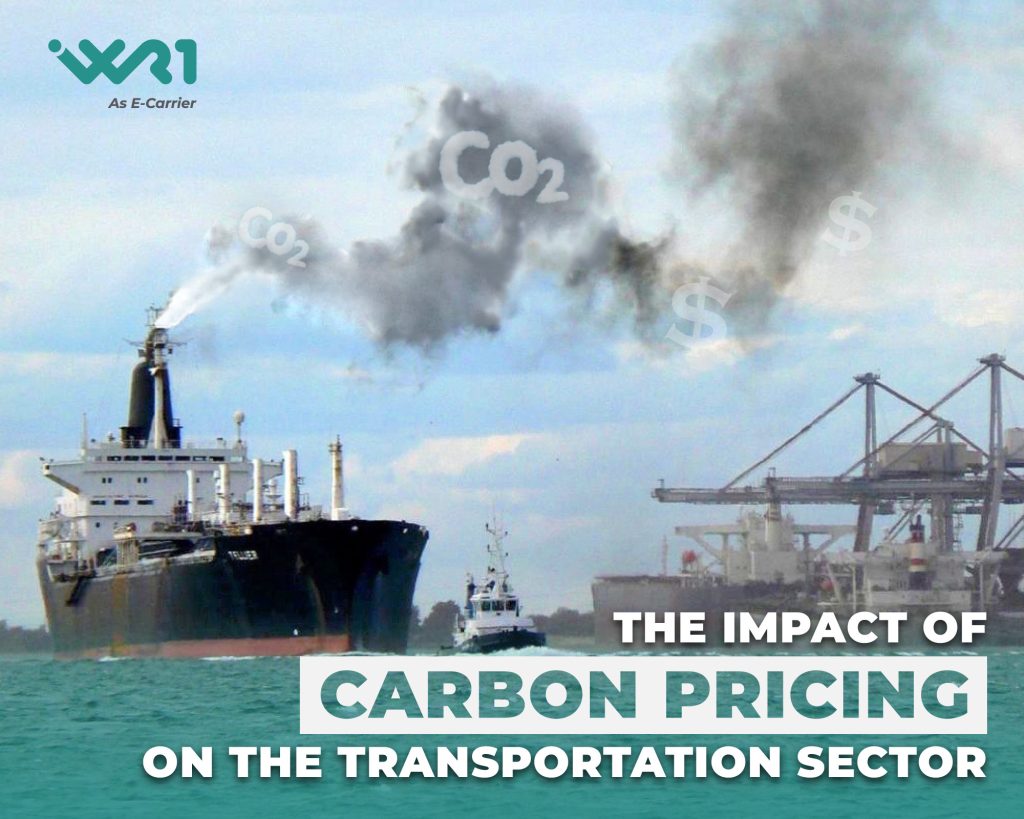At a time when industries are under pressure to reduce carbon emissions to mitigate climate change, global maritime transport emissions have increased by 20% over the past decade. The International Maritime Organization (IMO) has reached an agreement to cut the total annual greenhouse gas emissions from the maritime transport sector by at least 20% by 2030 and at least 70% by 2040, compared to 2008.

Carbon taxes and carbon markets are considered feasible tools to achieve carbon pricing goals. On the other hand, they also impact the maritime transport industry. Let’s explore with WR1 through the article below.
Shipping lines must purchase carbon emission permits when operating in Europe
In December 2022, the European Union (EU) agreed for the first time to include maritime transport activities in the carbon market, requiring shipping companies to take financial responsibility for the emissions they produce. This decision created pressure on the maritime sector, forcing them to push for increased investment in environmentally friendly technologies. Starting from 2024, shipping companies are required to purchase carbon emission permits for 40% of their emissions, and this rate will increase to 70% in 2025 and finally to 100% in 2026 for voyages within the EU territory. Beginning in 2026, two greenhouse gases, methane (CH4) and nitrous oxide (NO2), will also be subject to emission fees in the maritime transport industry…
Owners and Charterers conflict
Shipping lines are facing a tense conflict with cargo business conglomerates regarding financial responsibility for complying with environmental protection regulations when assessing the carbon emission intensity of publicly disclosed ships.
Shipping corp argue that ship lessees, such as oil and cargo merchants, should bear the losses if vessels are “downgraded” under new regulations assessing their carbon intensity. However, large cargo business conglomerates oppose efforts to impose legal obligations on them.
The debate over who will pay for reducing carbon emissions in maritime transport has made global efforts to reduce carbon emissions complex and caused disruptions in the shipping industry.
The carbon intensity index has made shipping companies concerned that initial ratings will impact the market
The IMO has introduced the Carbon Intensity Indicator, evaluating individual ships based on their increasing emissions on a scale from A to E. Ships with high emissions per unit of power and distance traveled will be ranked lower, such as D or E. Ships ranked D for three consecutive years or E for one year will have to develop an action plan to improve and achieve at least a C rating. Regulatory agencies, port authorities, and stakeholders may offer incentives for ships ranked A or B.
Mandatory ranking will be implemented next year. Currently, leading customers like Amazon, Unilever, and Ikea have pledged to only use zero-carbon-emission ships by 2040, which could significantly impact shipping companies ranked in categories D and E.



 Tiếng Việt
Tiếng Việt

